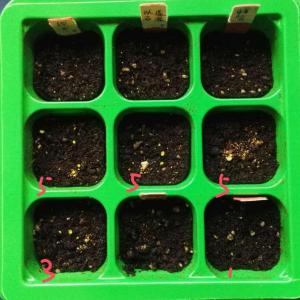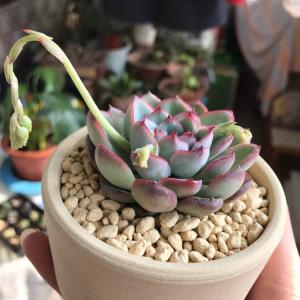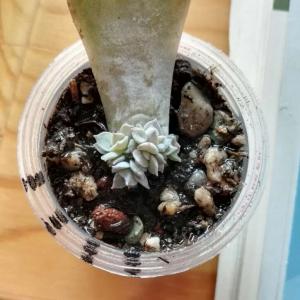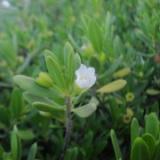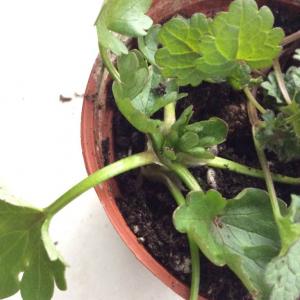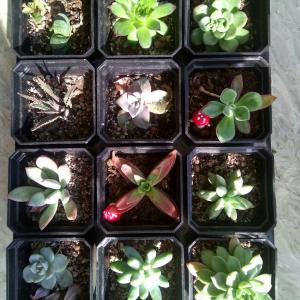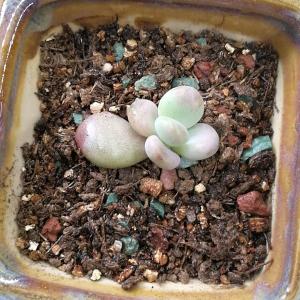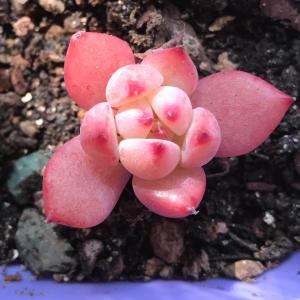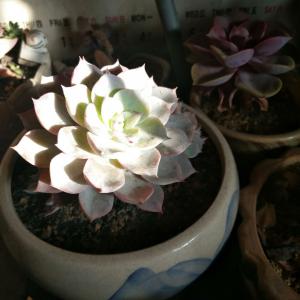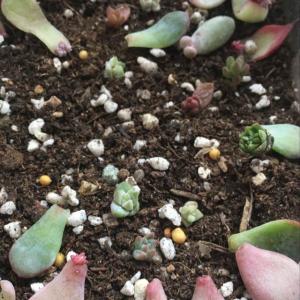文章
Eyin Thor
2017年02月15日

To have a productive garden, healthy soil is essential and if you want to improve your garden soil here we’ve 6 Most Important Tips.6 Ways to Get Super Soil
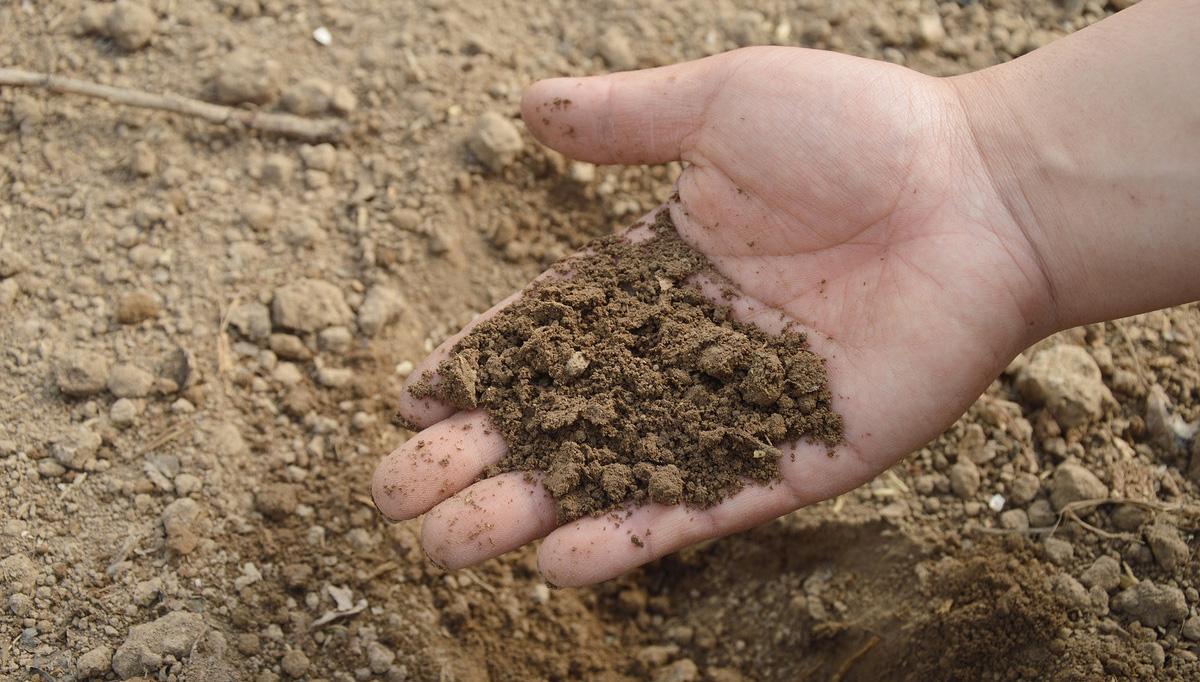
1. Look out for the color of your garden soil
A pitch-dark soil is best. As a general rule of thumb– Darker soil has more organic content as the substances resulting from decomposition of the organic matter are oxidized and acquire a dark coloration. Here’s an informative article that’ll teach you more about soil color and its effects on plants.
2. Soil texture is also important
Identifying the texture of the garden soil is important too. The best garden soil is loamy in texture. It is neither too porous and nor too compact. The soil must be crumbly, airy, and light. To determine the texture, it is important that you feel it For this, take a handful of soil and drop enough water on it and form a ball. When you press it, it will fall apart quickly (if it is sandy) and you will feel the grit rub. A silt will form a ball, but when you try to roll it out into a ribbon it will crack. A clay soil will roll out into a long ribbon.
However, if the texture of your soil is ideal you’ll be able to form the ball easily and when you press, it will break and fall apart gradually.
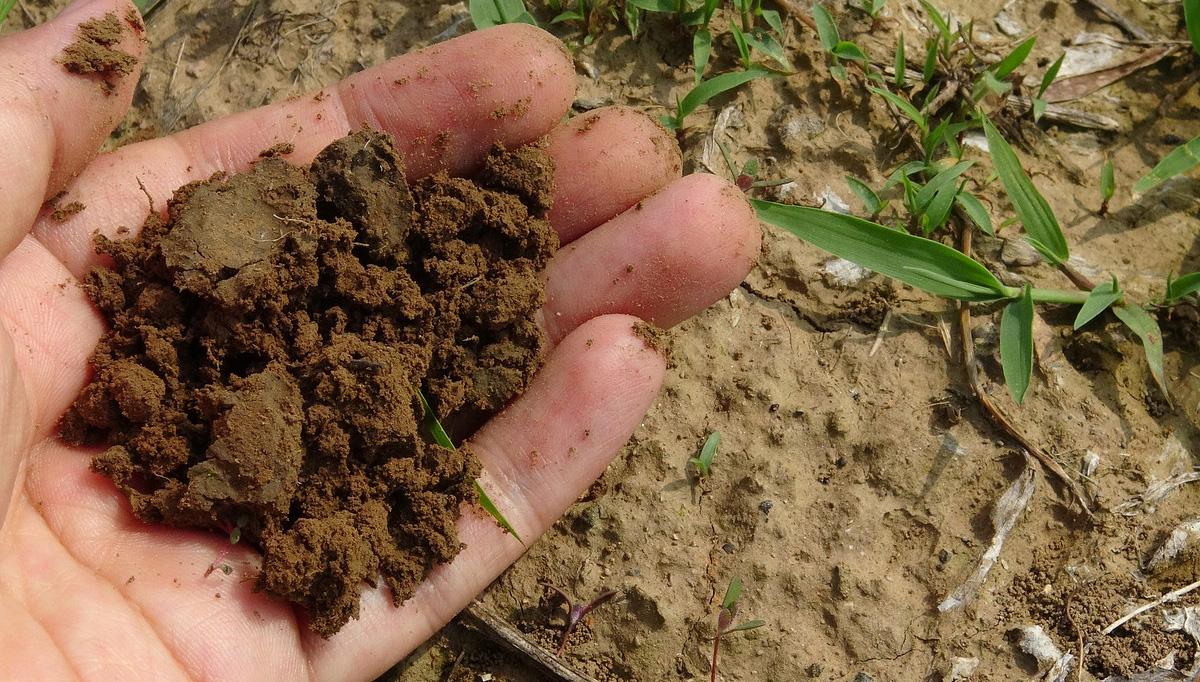
3. Notice the depth of your soil
The depth of the soil is as important as the texture and color of the soil. Go to the planting site and dig it with the help of a shovel. If you can dig at least 10-12 inches down (the more the better) without touching the hard layers of earth, it would be better. It is required for the healthy growth of plants as roots penetrate deeply. If the depth of your soil is not sufficient you’ll need to make it deeper.
4. Weed out the weeds
Look out for the existing vegetation at the planting site. If there are unwanted plants (which we call weeds) remove them. The population of weeds will also determine how healthy your soil is. You may need to improve the soil more if even the weeds are unable to thrive at your neglected planting site. Read these weeding tips for help.
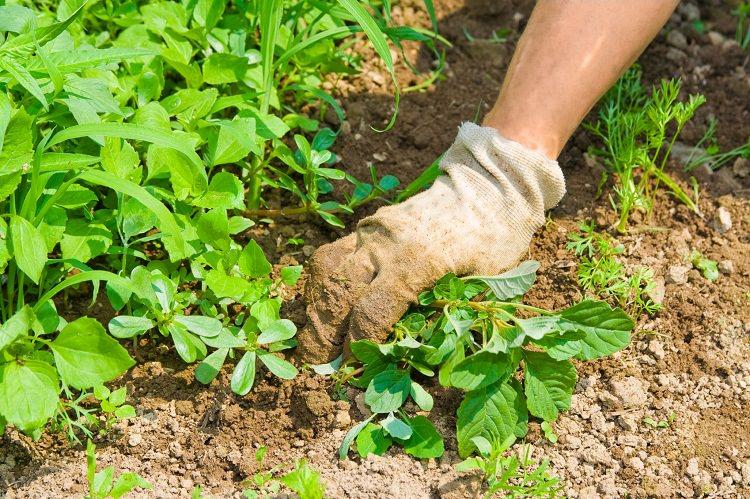
5. Don’t avoid the soil testing
For the backyard gardeners, this step is essential to follow– Not only you’ll find out whether your soil is acidic, alkaline or neutral but also the different trace elements and minerals. The test also informs you about the contamination of soil.
Contact your local extension office for soil testing. Unlike many soil testing labs the extension office of your county will do this for free (or at low cost). You can also purchase a test kit that allows you to determine the soil composition. However, this may be costly and you’ll not get plenty of details. Once you find out the pH level and all the details of your soil you can easily balance it to grow your favorite plants.
6. Add Organic matter
Adding the organic matter always help and you should add well-rotted manure and compost regularly as it adds nutrients to soil naturally and also provides food for microorganisms that live in the soil. The addition of organic matter also improves the texture of the soil.
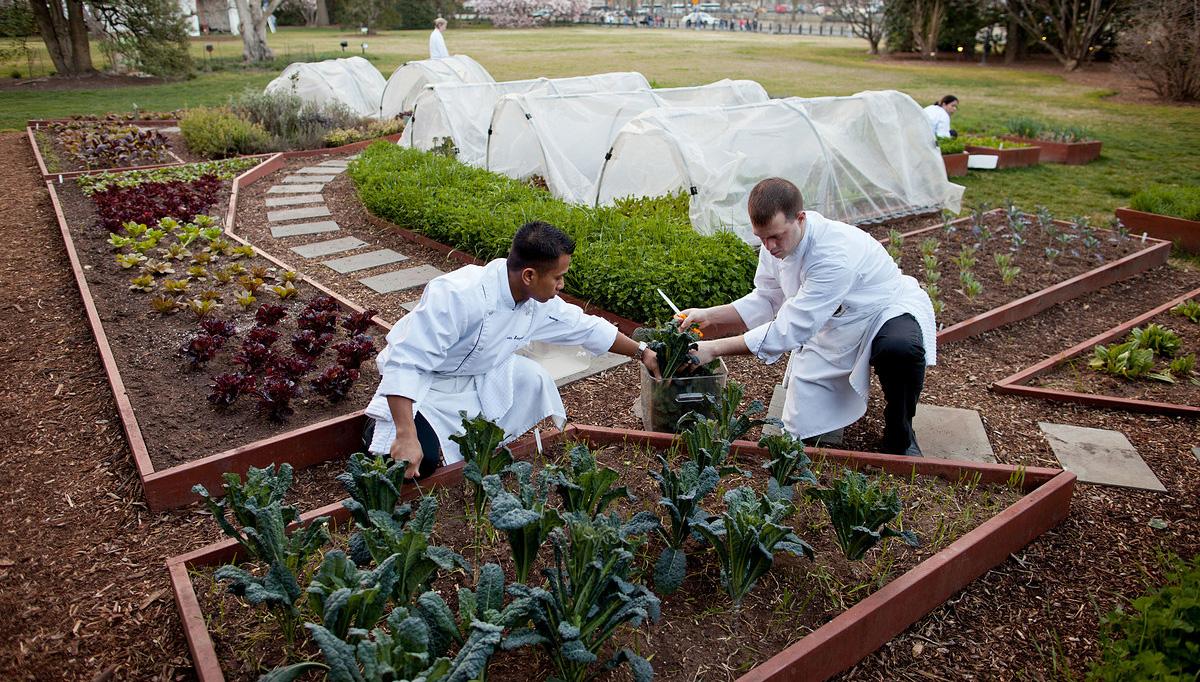

1. Look out for the color of your garden soil
A pitch-dark soil is best. As a general rule of thumb– Darker soil has more organic content as the substances resulting from decomposition of the organic matter are oxidized and acquire a dark coloration. Here’s an informative article that’ll teach you more about soil color and its effects on plants.
2. Soil texture is also important
Identifying the texture of the garden soil is important too. The best garden soil is loamy in texture. It is neither too porous and nor too compact. The soil must be crumbly, airy, and light. To determine the texture, it is important that you feel it For this, take a handful of soil and drop enough water on it and form a ball. When you press it, it will fall apart quickly (if it is sandy) and you will feel the grit rub. A silt will form a ball, but when you try to roll it out into a ribbon it will crack. A clay soil will roll out into a long ribbon.
However, if the texture of your soil is ideal you’ll be able to form the ball easily and when you press, it will break and fall apart gradually.

3. Notice the depth of your soil
The depth of the soil is as important as the texture and color of the soil. Go to the planting site and dig it with the help of a shovel. If you can dig at least 10-12 inches down (the more the better) without touching the hard layers of earth, it would be better. It is required for the healthy growth of plants as roots penetrate deeply. If the depth of your soil is not sufficient you’ll need to make it deeper.
4. Weed out the weeds
Look out for the existing vegetation at the planting site. If there are unwanted plants (which we call weeds) remove them. The population of weeds will also determine how healthy your soil is. You may need to improve the soil more if even the weeds are unable to thrive at your neglected planting site. Read these weeding tips for help.

5. Don’t avoid the soil testing
For the backyard gardeners, this step is essential to follow– Not only you’ll find out whether your soil is acidic, alkaline or neutral but also the different trace elements and minerals. The test also informs you about the contamination of soil.
Contact your local extension office for soil testing. Unlike many soil testing labs the extension office of your county will do this for free (or at low cost). You can also purchase a test kit that allows you to determine the soil composition. However, this may be costly and you’ll not get plenty of details. Once you find out the pH level and all the details of your soil you can easily balance it to grow your favorite plants.
6. Add Organic matter
Adding the organic matter always help and you should add well-rotted manure and compost regularly as it adds nutrients to soil naturally and also provides food for microorganisms that live in the soil. The addition of organic matter also improves the texture of the soil.

4
0
文章
Andy
2017年02月15日

Starting an indoor herb garden? Find out 11 best herbs to grow indoors. These are easiest to grow and require less care.
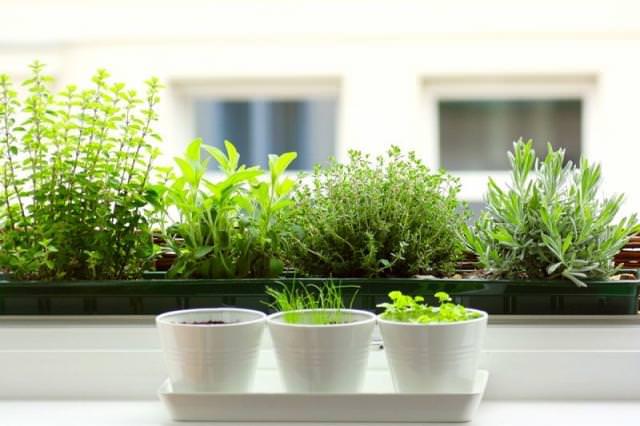
Best Herbs to Grow Indoors in Less Sun
1. Lemongrass
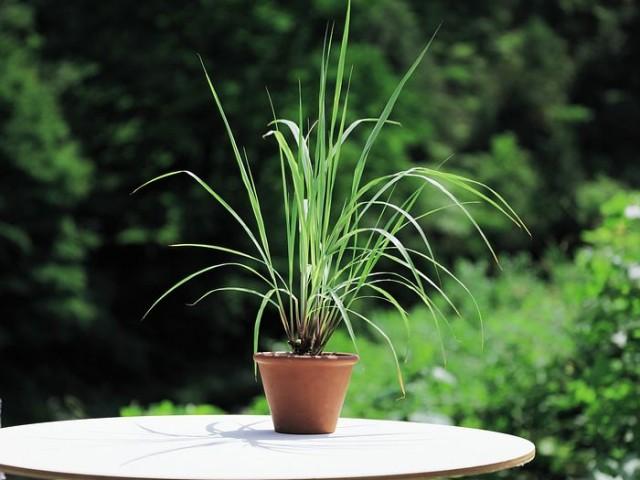
This herb grows wild in tropics and becomes easiest indoor herb, you can also grow it in temperate climates. It requires slightly moist soil and partial sun, and it can even adjust itself in a small container.
2. Mint
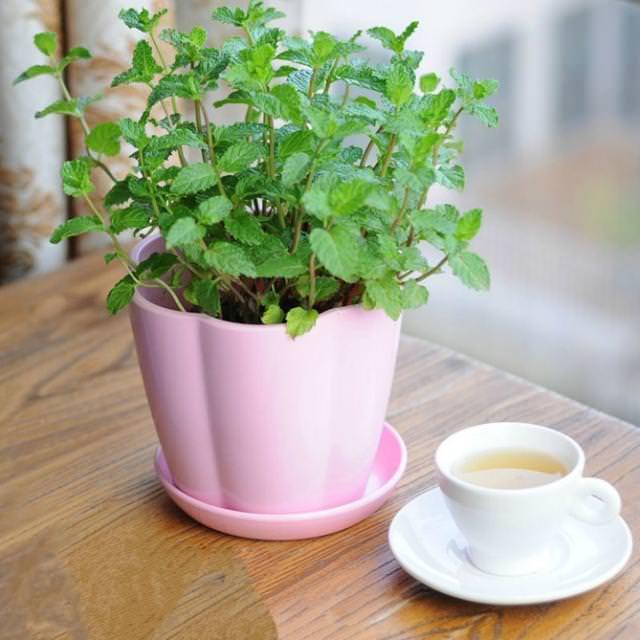
In the garden, mint becomes very invasive and grows like a weed. It doesn’t require plenty of sun too. You can even keep your potted mint plant in a spot that receives bright indirect sun.
3. Parsley

Germinate parsley from seeds, seedlings may sprout up late, sometimes in a month. But once grown, parsley requires minimal attention. Grow it in a medium-large pot and keep that in a spot that receives part sun. In a moderate room temperature, you can grow it year round. Just propagate new plants time to time from cuttings and it will last forever in your indoor herb garden.
4. Chives

Herbs that require less sunlight and moist soil in order to thrive are most suitable for growing indoors. Chives doesn’t require a sunny spot. Just place the pot near a bright window facing east. You can multiply chives from an already established plant by division.
5. Garden Cress

You can grow this cool season annual indoors easily. Plant seeds in a shallow but wide containers and keep the pot on a windowsill that receives partial sun. Soil should be moist, for regular harvest of cress micro greens, plant seeds in interval of every two weeks. You can cut and harvest the garden cress 3-4 times. If there is no sun, you can grow it under fluorescent lamps and T5 fluorescent plant lights.
6. Catnip
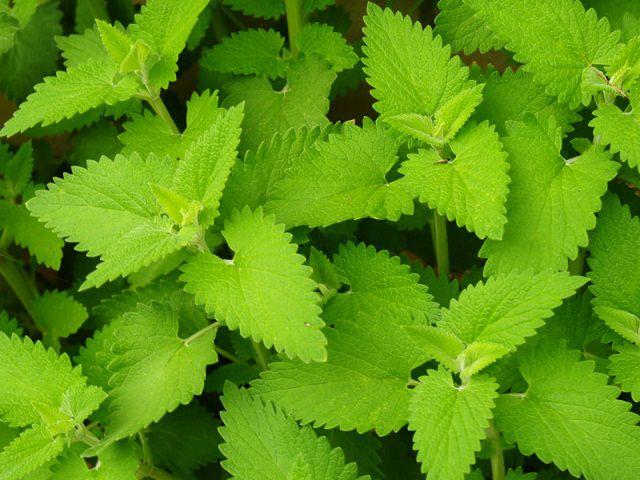
Growing catnip indoors is hard if you have cats. Apart from that, it is one of the easiest herbs. Once you germinate seeds, you can grow it forever from cuttings. Place the pot on a sunny windowsill and keep it well watered.
7. Lemon Balm

Lemon balm grows year round in warmer zones. Some gardeners even consider it a weed. Growing lemon balm indoors is super easy if you can provide it an exposure to 4 hours of sunlight daily. When growing indoors, water the plant only when top soil is dry.
8. Chervil
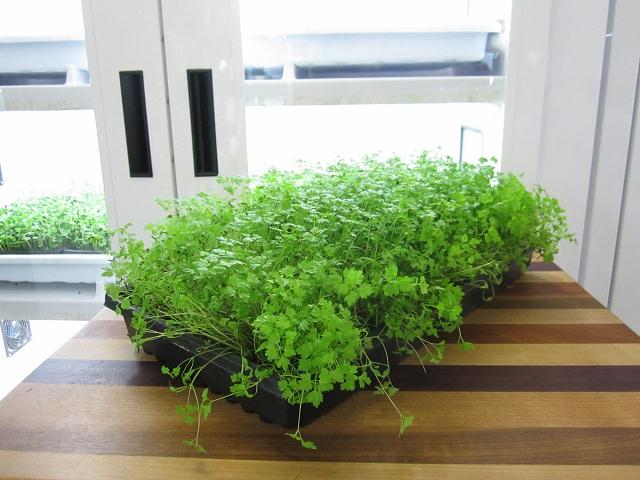
Chervil is one of the herbs you can grow indoors smoothly. A room temperature around 60-70 F is optimum for it. It can also adapt to low light conditions.
Best Herbs to Grow Indoors in More Sun9. Dill
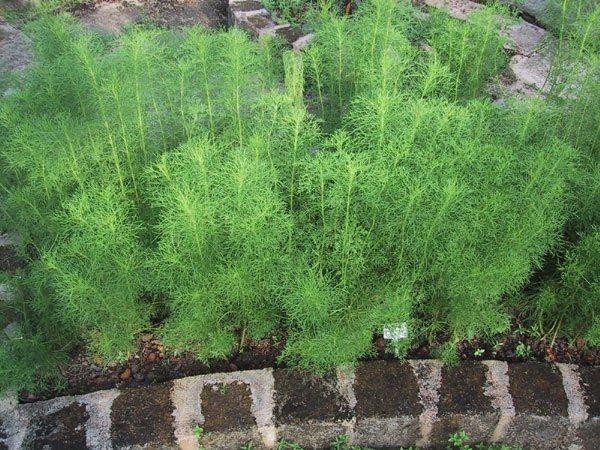
The secret of growing dill successfully in a container is to grow it in a deep one. A minimum 10 inches deep container is required. For growing dill indoors keep it in a spot that receives at least 5 hours of sunlight daily, provide good air circulation and water it only when top 1 inch surface of potting soil seems dry.
9. Cilantro

Image Credit: Gardening Know How
Cilantro is extremely easy to germinate but hard to maintain in containers. The trick is to grow cilantro in a deep container. It bolts quickly so it is better to plant seeds time to time. Keep cilantro in the south or west facing window.
10. Sage
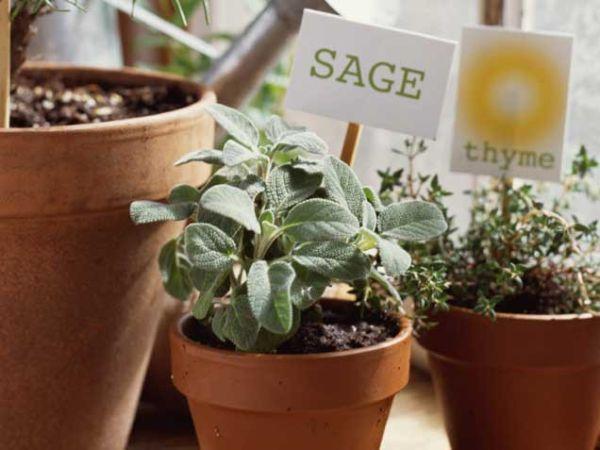
Grow sage indoors only if you have a South or West facing window that receives plenty of sun. This perennial herb takes a lot of time to get established when grown from seeds so it is better to take a tip cutting and propagate it.
11. Thyme
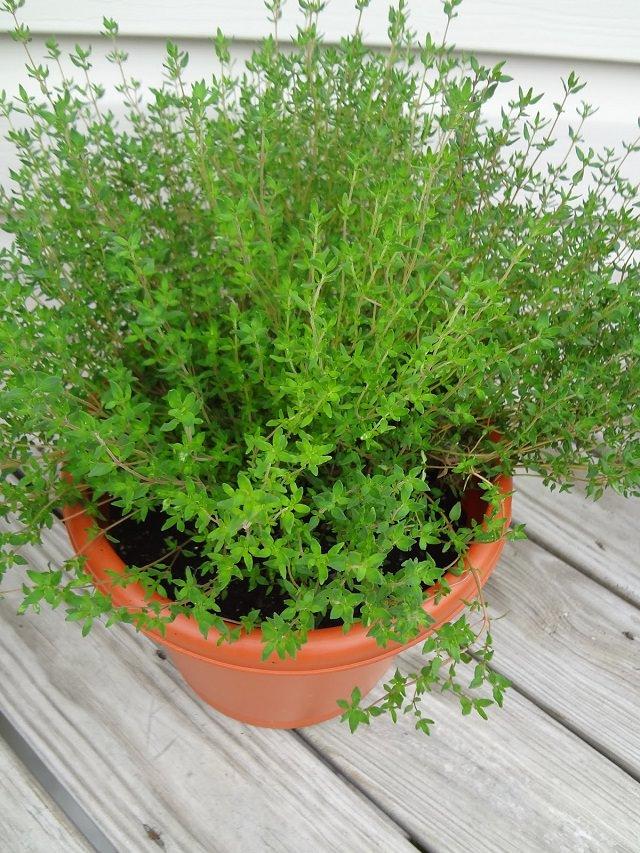
Thyme can adjust itself to partial sun and if you can provide 5 hours of sunlight daily, growing thyme indoors is possible.
A few more herbs you can grow indoors on a sunny windowsillOreganoRosemaryTarragonBasil

Best Herbs to Grow Indoors in Less Sun
1. Lemongrass

This herb grows wild in tropics and becomes easiest indoor herb, you can also grow it in temperate climates. It requires slightly moist soil and partial sun, and it can even adjust itself in a small container.
2. Mint

In the garden, mint becomes very invasive and grows like a weed. It doesn’t require plenty of sun too. You can even keep your potted mint plant in a spot that receives bright indirect sun.
3. Parsley

Germinate parsley from seeds, seedlings may sprout up late, sometimes in a month. But once grown, parsley requires minimal attention. Grow it in a medium-large pot and keep that in a spot that receives part sun. In a moderate room temperature, you can grow it year round. Just propagate new plants time to time from cuttings and it will last forever in your indoor herb garden.
4. Chives

Herbs that require less sunlight and moist soil in order to thrive are most suitable for growing indoors. Chives doesn’t require a sunny spot. Just place the pot near a bright window facing east. You can multiply chives from an already established plant by division.
5. Garden Cress

You can grow this cool season annual indoors easily. Plant seeds in a shallow but wide containers and keep the pot on a windowsill that receives partial sun. Soil should be moist, for regular harvest of cress micro greens, plant seeds in interval of every two weeks. You can cut and harvest the garden cress 3-4 times. If there is no sun, you can grow it under fluorescent lamps and T5 fluorescent plant lights.
6. Catnip

Growing catnip indoors is hard if you have cats. Apart from that, it is one of the easiest herbs. Once you germinate seeds, you can grow it forever from cuttings. Place the pot on a sunny windowsill and keep it well watered.
7. Lemon Balm

Lemon balm grows year round in warmer zones. Some gardeners even consider it a weed. Growing lemon balm indoors is super easy if you can provide it an exposure to 4 hours of sunlight daily. When growing indoors, water the plant only when top soil is dry.
8. Chervil

Chervil is one of the herbs you can grow indoors smoothly. A room temperature around 60-70 F is optimum for it. It can also adapt to low light conditions.
Best Herbs to Grow Indoors in More Sun9. Dill

The secret of growing dill successfully in a container is to grow it in a deep one. A minimum 10 inches deep container is required. For growing dill indoors keep it in a spot that receives at least 5 hours of sunlight daily, provide good air circulation and water it only when top 1 inch surface of potting soil seems dry.
9. Cilantro

Image Credit: Gardening Know How
Cilantro is extremely easy to germinate but hard to maintain in containers. The trick is to grow cilantro in a deep container. It bolts quickly so it is better to plant seeds time to time. Keep cilantro in the south or west facing window.
10. Sage

Grow sage indoors only if you have a South or West facing window that receives plenty of sun. This perennial herb takes a lot of time to get established when grown from seeds so it is better to take a tip cutting and propagate it.
11. Thyme

Thyme can adjust itself to partial sun and if you can provide 5 hours of sunlight daily, growing thyme indoors is possible.
A few more herbs you can grow indoors on a sunny windowsillOreganoRosemaryTarragonBasil
4
1
文章
Andy
2017年02月15日

If you’re new to gardening and planning to grow herbs then check out these 13 easy to grow herbs. All of them are low maintenance.
Also Read: How to Make Spiral Herb Garden
Easy to Grow Herbs for a Herb Garden
1. Parsley

Parsley is a biennial herbaceous plant, although it can also be grown as an annual. It is propagated from seeds easily, place it in a sunny or shady it doesn’t mind, parsley is not picky about soil type too. However, choose soil that is not too compact. It is one of the most easy to grow herbs for containers.
2. Mint

Mint is a very aromatic, perennial herb that can be grown in pots or in garden soil.
It needs plenty of water and supply of mineral fertilizers or natural organic fertilizers to spread heavily. It grows better in partial shade. You can easily get new plants from its cuttings or by dividing the root ball.
3. Rosemary

Use it fresh or dried, rosemary is a boon to have in a kitchen garden. Growing rosemary from seeds is slightly difficult as it takes time, quicker way is to buy a potted rosemary plant and multiply it from cuttings.
4. Lavender

You can grow lavender in a variety of climates. Suitable for cool temperate or Mediterranean climates you can also grow this most beautiful herb in subtropical regions.
If you want to multiply it, do it by cuttings of 10 cm. in size in summer.
Also Read: How to Grow Lavender in Tropics
5. Thyme

An easy to grow and less demanding herb, it adapts to all types of soils and is highly resistant to drought. You only need to provide it the sun. After four or five years this low growing plant loses some of its perfume and you may need to replace the old plants. *Grow it as annual in tropics.
6. Chamomile

It likes full sun, with well-drained and permeable soil. It is resistant to drought and once bloomed in the spring, you should cut it to regain its strength. If you collect the flowers, you must do this in its fullness, dry flowers in shade to avoid the exposure to direct sunlight to avoid spoilage.
7. Sage

One of the toughest herbs that prefer full sun situations, especially if you live in a cool climate, always plant sage in a warm place. Sage can be grown in a variety of soil types, well draining and permeable soil with little organic matter is recommended. In subtropical or tropical climatic zones, grow sage in a slightly clayey soil in pots and provide shade in the afternoon. *Overwatering must be avoided.
8. Oregano

This pungent herb is most favorite of many. It is known for centuries throughout the Mediterranean and West Asia, where it grows freely. Growing oregano is not difficult, grow it from seeds, cuttings or buy a few potted plants for your garden in the spring. To ensure the quality, remove 3-4 years old plant and grow new ones.
9. Lemon Verbena

Being a subtropical herb lemon verbena needs a warm environment to thrive. Grow the plant in direct sun. In cooler zones, growing lemon verbena in pots is a better idea to protect it from frost.
10. Rue

Basically, an ornamental medicinal herb but it is also used in recipes though sparingly. It is not much popular but growing this pungent herb is a great way to repel insects from your garden. It grows in USDA Zones 4-9 and requires the sun or partial shade and protection from the wind. It prefers poor and calcareous soils.
11. Basil

Basil must be planted in full sun (6 hours minimum) in a well-drained and moist soil. Pick leaves to encourage the growth and when the plant is young pick the tips for thick bushier shape.
12. Curry Tree

Grow the pungent curry tree plant if you want to enjoy more flavor in your South East Asian delicacies and Indian curries. However, the curry tree does not tolerate frost but it is exceptionally a low maintenance, drought resistant tropical herb. You can grow it in a pot and protect it in winters, it’s easy.
Also Read: How to Grow Curry Tree
13. Bay Leaf Tree

One more small to medium sized tree in our list that is easy to grow. Grow bay leaf tree to add flavor to your soups and stews. This plant may not be hardy to cooler zones below 8 and requires protection in winter. The best way to overwinter this Mediterranean herb is to keep it indoors.
Learn how to grow laurel bay leaf tree
Also Read: How to Make Spiral Herb Garden
Easy to Grow Herbs for a Herb Garden
1. Parsley

Parsley is a biennial herbaceous plant, although it can also be grown as an annual. It is propagated from seeds easily, place it in a sunny or shady it doesn’t mind, parsley is not picky about soil type too. However, choose soil that is not too compact. It is one of the most easy to grow herbs for containers.
2. Mint

Mint is a very aromatic, perennial herb that can be grown in pots or in garden soil.
It needs plenty of water and supply of mineral fertilizers or natural organic fertilizers to spread heavily. It grows better in partial shade. You can easily get new plants from its cuttings or by dividing the root ball.
3. Rosemary

Use it fresh or dried, rosemary is a boon to have in a kitchen garden. Growing rosemary from seeds is slightly difficult as it takes time, quicker way is to buy a potted rosemary plant and multiply it from cuttings.
4. Lavender

You can grow lavender in a variety of climates. Suitable for cool temperate or Mediterranean climates you can also grow this most beautiful herb in subtropical regions.
If you want to multiply it, do it by cuttings of 10 cm. in size in summer.
Also Read: How to Grow Lavender in Tropics
5. Thyme

An easy to grow and less demanding herb, it adapts to all types of soils and is highly resistant to drought. You only need to provide it the sun. After four or five years this low growing plant loses some of its perfume and you may need to replace the old plants. *Grow it as annual in tropics.
6. Chamomile

It likes full sun, with well-drained and permeable soil. It is resistant to drought and once bloomed in the spring, you should cut it to regain its strength. If you collect the flowers, you must do this in its fullness, dry flowers in shade to avoid the exposure to direct sunlight to avoid spoilage.
7. Sage

One of the toughest herbs that prefer full sun situations, especially if you live in a cool climate, always plant sage in a warm place. Sage can be grown in a variety of soil types, well draining and permeable soil with little organic matter is recommended. In subtropical or tropical climatic zones, grow sage in a slightly clayey soil in pots and provide shade in the afternoon. *Overwatering must be avoided.
8. Oregano

This pungent herb is most favorite of many. It is known for centuries throughout the Mediterranean and West Asia, where it grows freely. Growing oregano is not difficult, grow it from seeds, cuttings or buy a few potted plants for your garden in the spring. To ensure the quality, remove 3-4 years old plant and grow new ones.
9. Lemon Verbena

Being a subtropical herb lemon verbena needs a warm environment to thrive. Grow the plant in direct sun. In cooler zones, growing lemon verbena in pots is a better idea to protect it from frost.
10. Rue

Basically, an ornamental medicinal herb but it is also used in recipes though sparingly. It is not much popular but growing this pungent herb is a great way to repel insects from your garden. It grows in USDA Zones 4-9 and requires the sun or partial shade and protection from the wind. It prefers poor and calcareous soils.
11. Basil

Basil must be planted in full sun (6 hours minimum) in a well-drained and moist soil. Pick leaves to encourage the growth and when the plant is young pick the tips for thick bushier shape.
12. Curry Tree

Grow the pungent curry tree plant if you want to enjoy more flavor in your South East Asian delicacies and Indian curries. However, the curry tree does not tolerate frost but it is exceptionally a low maintenance, drought resistant tropical herb. You can grow it in a pot and protect it in winters, it’s easy.
Also Read: How to Grow Curry Tree
13. Bay Leaf Tree

One more small to medium sized tree in our list that is easy to grow. Grow bay leaf tree to add flavor to your soups and stews. This plant may not be hardy to cooler zones below 8 and requires protection in winter. The best way to overwinter this Mediterranean herb is to keep it indoors.
Learn how to grow laurel bay leaf tree
2
1



